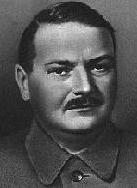Literary Criticism: Comintern 1934

Source: Gorky, Radek, Bukharin, Zdhanov and others “Soviet Writers’ Congress 1934”, Lawrence & Wishart, 1977;
Online Version: Marxists Internet Archive (marxists.org) 2004;
Transcribed by: Jose Braz, Andy Blunden and Hasan for the Marxists Internet Archive.
The Soviet Writers Congress was held in August 1934, five years into the ultra-left “Third Period” of the Comintern, shortly afterwards abandoned in favour of the “Popular Front” policy. The thrust of the Comintern’s cultural policy at this time, was to gather around the Comintern leading writers and intellectuals in all countries on the basis of a very sharp anti-fascist line, in which its opponents were frequently labelled as “social-fascists.” Andrei Zdhanov, who had been a close ally of Stalin’s since 1923, was the foremost advocate of this policy in the arts. Zdhanov was a founder of the Soviet Writers’ Union, and chief spokesperson for the the principle of “Partiynost” and the line of Socialist Realism advocated in the arts.
A. A. Zdhanov: Soviet Literature - Richest in Ideas, Most Advanced Literature
Maxim Gorky: Soviet Literature.
Karl Radek: Contemporary World Literature and the Tasks of Proletarian Art.
1. World Literature and the War.
2. World Literature and the October Revolution.
3. The Crisis of Capitalism and the Split in World Literature.
4. Between Proletarian Literature and Fascism.
5. Fascism and Literaturre.
6. The Birth of Revolutionary and Proletarian Literature.
7. James Joyce or Socialist Realism?
Speech in Answer to the Discussion
1. The Role of Proletarian Literature Abroad and Its Present State.
2. The Split in World Literature.
3. Artists Coming to Join the Proletariat.
4. Where to Direct the Eyes of Literature.
Nikolai Bukharin: Poetry, Poetics and the Problems of Poetry in the USSR
1. Poetry
2. Poetics as the Technology of Poetic Craftsmanship.
3. The Turning Point.
4. Our Contemporaries.
5. The Level of Poetic Work in the U.S.S.R. and the, Tasks of Poetry.
A. I. Stetsky: Under the Flag of the Soviets, Under the Flag of Socialism
1. Our Guiding Line Is That of Socialist Realism
2. Soviet Writers Are Surrounded by the Love and Attention of the Toilers
3. “Chelyuskin” - Symbol of Proletarian Heroism
4. Let Us Produce Works Worthy of Our Great Epoch
Resolutions of the First All-Union Congress of Soviet Writers
1. Resolution on the Report of Maxim Gorky, the Co-Report of S. Y. Marshak and the Report on the Literature of the National Republics.
2. Resolution on the Report of Karl Radek on International Literature.
Biographies of Main Speakers
Andrei Zdhanov (1896-August 1948)
Maxim Gorky (1868-1936)
Nikolai Bukharin (1888-1938)
Karl Radek (1885-1939)
The Comintern in 1934
See the Comintern History Archive. In 1934, the Comintern was at end of the period called by Stalin the “Third Period. At the Seventh (and last) Congress of the Comintern in 1935, Stalin embarked on the “Popular Front” policy. This entailed an about-face on many policies.
The doctrine of “socialist realism” dominated Soviet arts policy until the end, “Zdhanovism,” meaning the injunction on all Soviet artists and writers to conform to the party line, continued until the “thaw” under Khrushchev, but the Popular Front meant that the Communist Party engaged with a wide range of non-Communist artists who were not subject to the demands of “Zdhanovism,” and would not necessarily be denounced as “social fascists,” and might even receive unwarranted praise, if it suited the Comintern's foreign policy aims. Meanwhile, Communist artists endeavoured to engage with the regional and national artistic traditions of their own country, having a mind ot the concept of a “progressive bourgeoisie,” whose spirit could be found in local or national artistic traditions.